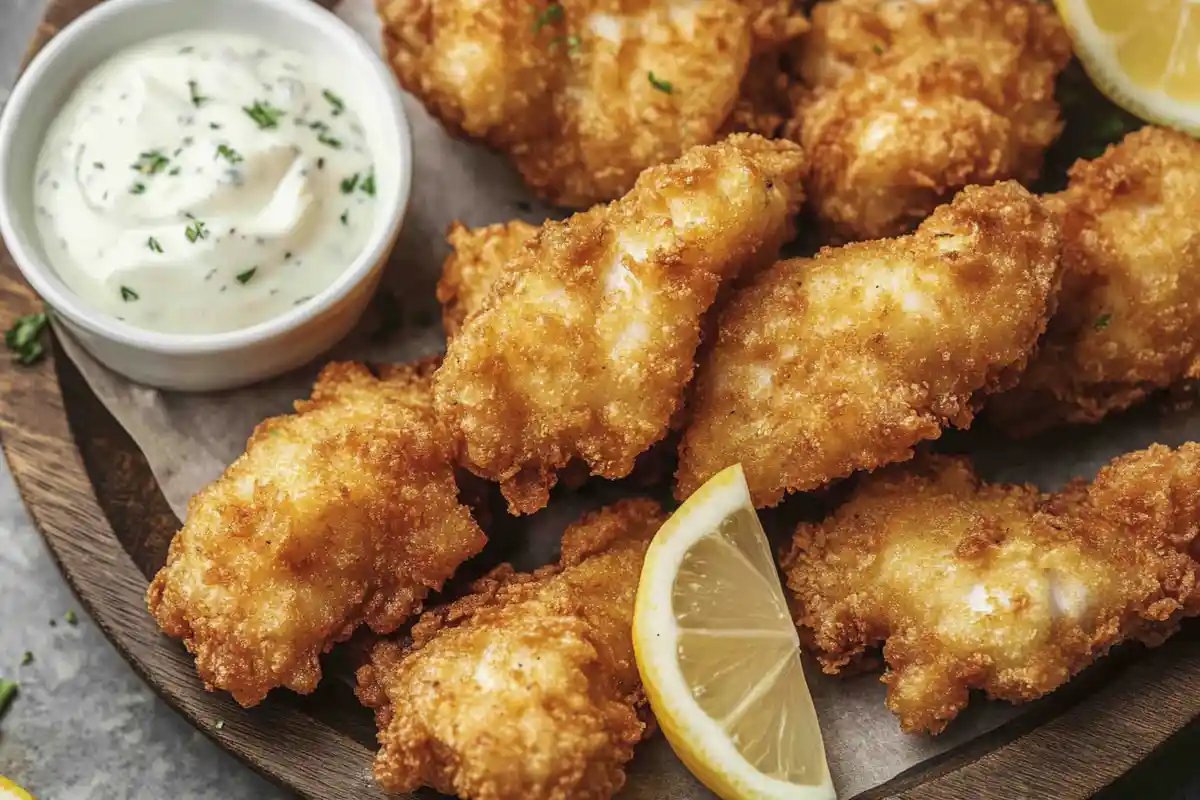Introduction to Long John Silver’s Batter
Long John Silver’s batter isn’t merely a coating—it’s a timeless culinary masterpiece. Renowned for its crunchy texture and golden, flawless finish, this batter transforms ordinary seafood into an unforgettable dining experience. But what sets it apart? Is it the precise blend of ingredients, the artful frying method, or perhaps a touch of culinary magic? In this article, we’ll delve into every aspect, from its storied history to the science behind its perfect crispiness. Whether you’re aiming to recreate this iconic batter at home or simply curious about its enduring appeal, you’re in for a delicious journey.
Table of Contents
The Legacy of Long John Silver’s
Long John Silver’s, founded in 1969, didn’t just aim to sell seafood; it aimed to create an experience. Inspired by the fictional pirate character from Robert Louis Stevenson’s novel “Treasure Island,” the restaurant built a theme around adventure and flavor. And what stole the show? The iconic batter-dipped fish and shrimp.
Over the decades, this batter has become synonymous with the brand’s identity. It’s not just about the fish; it’s about that signature crunch that resonates with every bite. People don’t just order a meal—they order nostalgia, comfort, and a little piece of culinary history.
Even as culinary trends evolve, the batter recipe remains steadfast. While competitors experiment with new techniques, Long John Silver’s remains rooted in a tradition that works.
Signature Batter: A Culinary Icon
What sets Long John Silver’s batter apart from others? Is it the blend of ingredients, the frying process, or something entirely different? The answer lies in a delicate balance of all these factors.
The batter is not overly thick, nor is it flimsy—it achieves the perfect consistency that adheres to the seafood while still allowing it to cook evenly. The addition of club soda gives it a light, airy texture, creating that crunchy outer shell we all love.
Moreover, the seasoning blend is subtle yet flavorful, enhancing the natural taste of the fish rather than overpowering it. It’s this harmony of flavors and textures that has turned Long John Silver’s batter into an industry benchmark.
Crafting Long John Silver’s Batter at Home
Recreating Long John Silver’s batter at home isn’t just about following a recipe—it’s about understanding the science behind each step. This iconic batter isn’t overly complicated, but it does require precision, the proper techniques, and a little patience.
Whether you’re preparing crispy fish fillets, shrimp, or even vegetable fritters, nailing the batter consistency and application method is key. In this section, we’ll walk through a step-by-step recipe guide and share essential tips to ensure your batter turns out just as light and crunchy as the original.
Step-by-Step Recipe Guide
Before diving into the recipe, make sure you have fresh ingredients and the necessary tools on hand. A mixing bowl, whisk, and thermometer will be your best friends in this process.
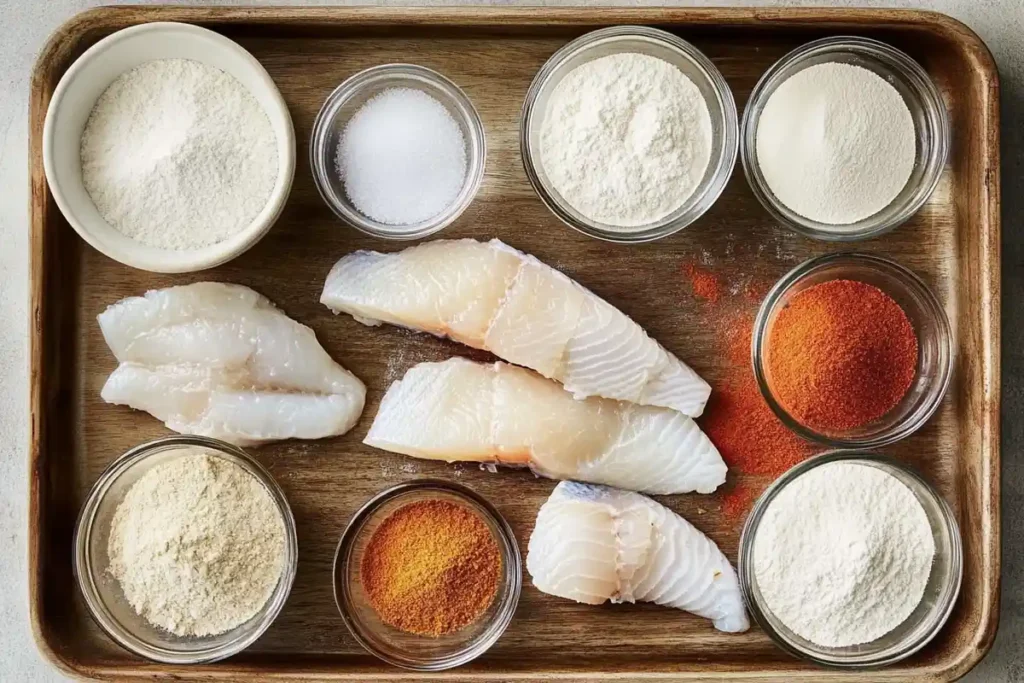
Preparing the Dry Mix
The foundation of Long John Silver’s batter starts with the dry ingredients. Combine:
- 1 cup all-purpose flour
- 1/4 cup cornstarch
- 1 teaspoon baking powder
- 1/2 teaspoon baking soda
- 1/2 teaspoon salt
- 1/2 teaspoon onion powder
- A pinch of paprika for color and flavor
Mix these dry ingredients thoroughly in a large bowl to ensure even distribution. The combination of flour and cornstarch provides structure, while the baking powder and baking soda create a light, airy texture.
Incorporating the Wet Ingredients
Once the dry mix is ready, it’s time to add the magic ingredient—club soda. Club soda introduces carbonation, which results in the signature crispiness.
- Slowly pour in about 1 cup of chilled club soda while whisking continuously.
- Stir gently to avoid overmixing. Overmixing can activate the gluten in the flour, making the batter chewy instead of crispy.
The batter should have a smooth, slightly runny texture. It shouldn’t be too thick or overly thin—it should cling to the back of a spoon without dripping excessively.
Achieving the Ideal Consistency
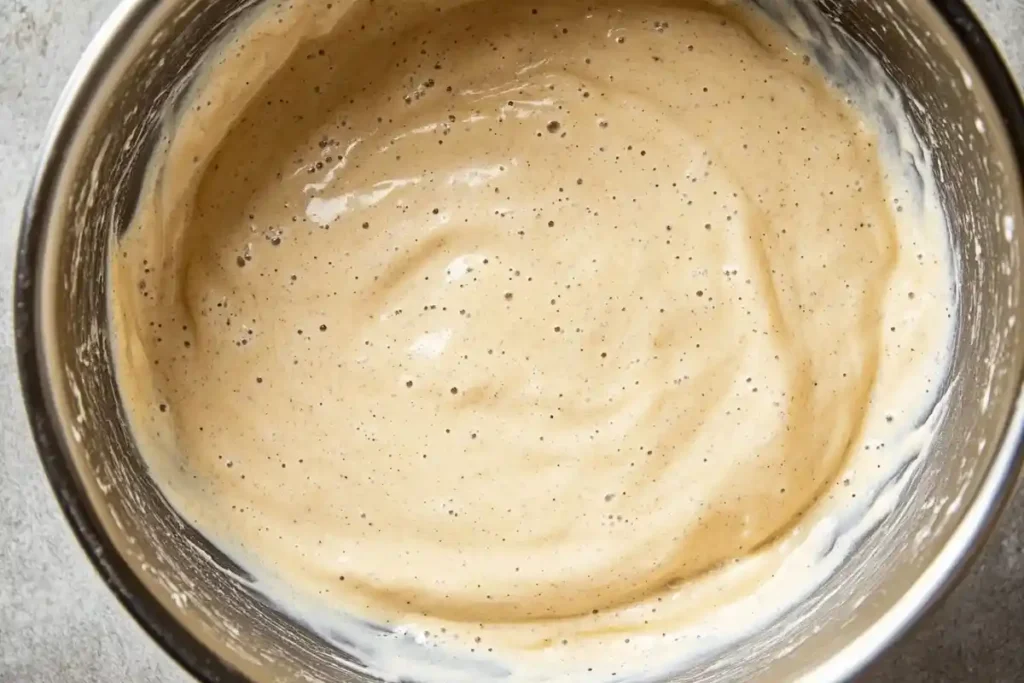
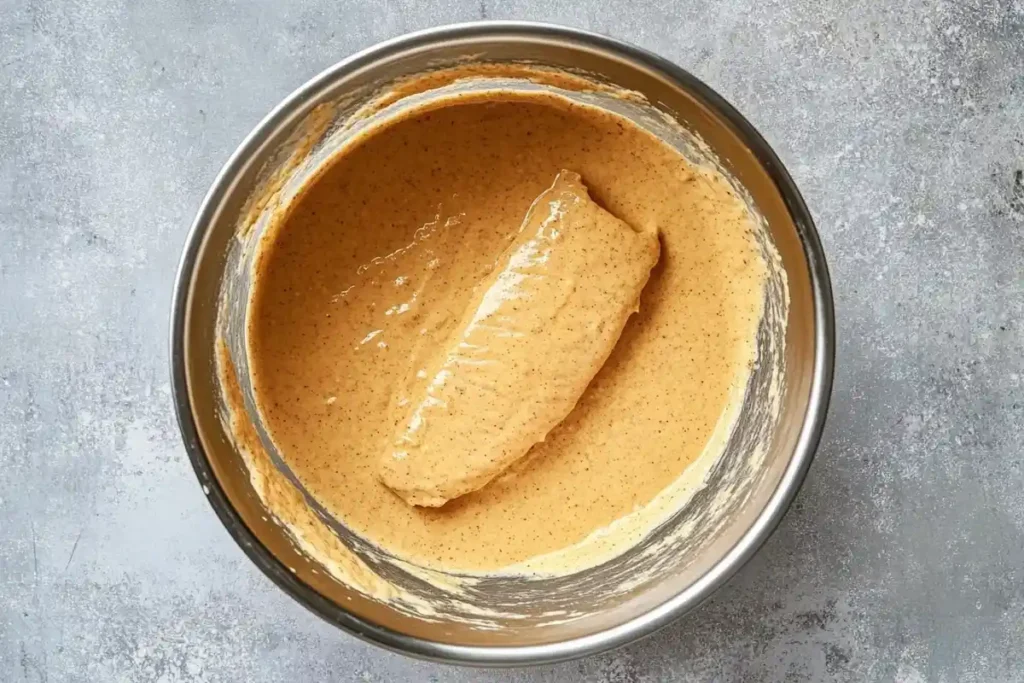
Consistency is everything when it comes to better perfection. If the batter is too thick, it will create a dense coating that overwhelms the fish. It is too thin, and it won’t stick appropriately during frying.
- The batter should resemble the consistency of the pancake batter.
- If it feels too thick, add a splash of club soda.
- If it’s too thin, sprinkle in a little extra flour.
Getting the consistency right ensures that your fish or vegetables are coated evenly, creating that signature golden crunch.
Frying Techniques for Perfect Crispiness
The secret to achieving Long John Silver’s signature crispiness doesn’t stop at the batter—it extends to frying techniques. You can have the perfect blend of ingredients, but without the proper frying methods, your seafood might end up soggy, greasy, or overcooked.
In this section, we’ll uncover the art of frying, from selecting the right oil to mastering the ideal temperature and achieving that iconic golden brown color. Whether you’re using a deep fryer or a stovetop skillet, these techniques will ensure that every bite delivers maximum crunch and flavor.
Selecting the Right Oil
When it comes to frying, not all oils are created equal. The choice of oil directly impacts the texture, flavor, and even the healthiness of your fried seafood. For Long John Silver’s batter, the ideal oil needs to have a high smoke point and a neutral flavor.
Oils like vegetable oil, canola oil, or peanut oil are popular choices. These oils can withstand high frying temperatures without breaking down, ensuring that your batter doesn’t soak up unnecessary grease.
Additionally, the neutral flavor profile of these oils ensures that the batter remains the star of the show, allowing the seasoning and crispiness to shine through.
Maintaining Optimal Oil Temperature
One of the most critical factors in frying is maintaining the correct oil temperature. If the oil is too hot, the batter will burn on the outside while leaving the inside undercooked. If it’s too cold, the batter will absorb excess oil, resulting in a greasy texture.
The sweet spot for frying Long John Silver’s batter-dipped seafood is around 350°F to 375°F (175°C to 190°C). This range ensures that the batter crisps up perfectly without becoming overly greasy.
To maintain a steady temperature, use a cooking thermometer. If you’re frying in batches, give the oil a moment to reheat between batches.
It’s also essential to avoid overcrowding the frying basket or pan, as this can cause the temperature to drop rapidly, resulting in uneven frying.
Achieving the Ideal Golden Brown Color
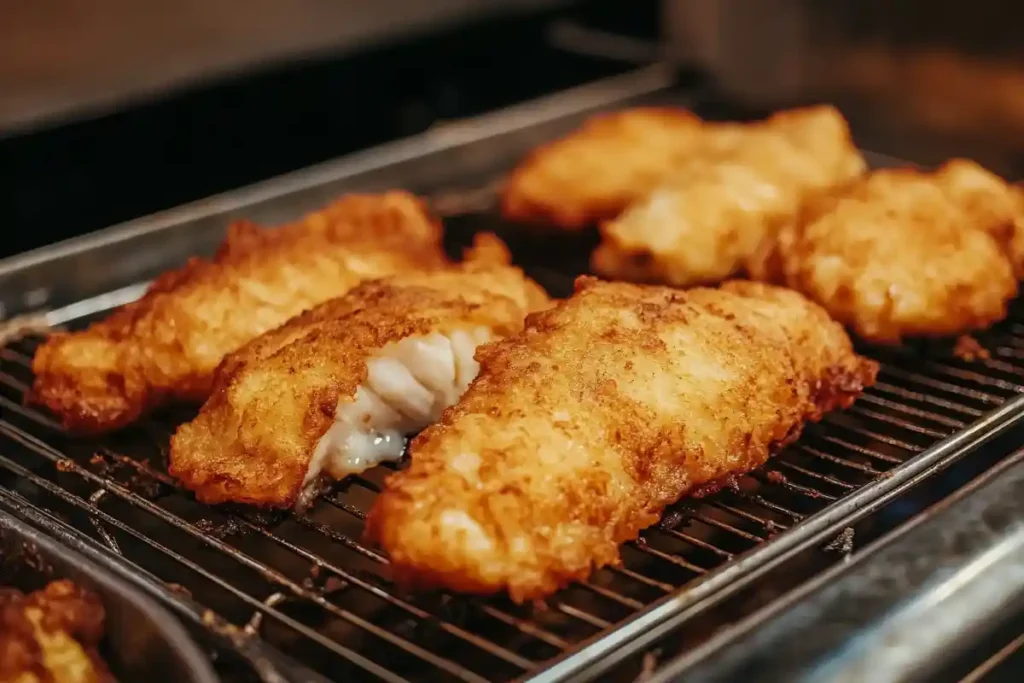
That golden-brown hue isn’t just about aesthetics—it’s a sign of perfectly fried batter. Achieving that iconic crispy golden color requires a balance of heat, timing, and technique.
The batter should fry for approximately 3-5 minutes per side, depending on the thickness of the fish or protein. It’s crucial to let the batter develop a crispy shell before flipping it to the other side.
Keep an eye on the color—too dark might mean it’s over-fried, while too pale suggests it’s undercooked. The perfect batter should have a deep golden color with a satisfying crunch when bitten into.
Once fried, let the seafood rest on a wire rack instead of paper towels. While paper towels might absorb excess oil, they can also trap steam underneath, turning your crispy batter soggy.
For more pro tips on frying seafood to perfection, check out this Classic Fish and Chips Recipe for inspiration and guidance.
Mastering these frying techniques will ensure your Long John Silver’ s-style seafood turns out crispy, golden, and utterly irresistible.
The versatility of Long John Silver’s Batter
The magic of Long John Silver’s batter doesn’t stop at seafood. While it’s famous for coating fish and shrimp to crispy perfection, this batter is surprisingly versatile. Its light texture and crunchy finish make it an excellent choice for a wide variety of proteins and even vegetables.
In this section, we’ll explore how this iconic batter goes beyond seafood, highlighting its potential in coating everything from chicken planks to onion rings. Whether you’re hosting a seafood dinner or experimenting with fried veggies, this batter offers endless possibilities.
Beyond Fish: Other Proteins
While fish and shrimp are the traditional stars of Long John Silver’s batter, other proteins can shine just as brightly when coated in this golden mix. Let’s dive into two popular options that pair exceptionally well with this batter.
Chicken Planks
Chicken might not be the first thing you associate with Long John Silver’s batter, but it’s an absolute delight. The crispy exterior complements the tender, juicy chicken inside, creating a bite that’s both satisfying and irresistible.
The secret lies in using chicken tenders or thinly sliced chicken breast pieces. The batter adheres beautifully to the chicken, ensuring every inch is coated evenly.
To make chicken planks at home, follow the same battering and frying techniques you’d use for fish. Serve them with dipping sauces like honey mustard or barbecue sauce for an unforgettable snack or meal.
Shrimp and Seafood Variations
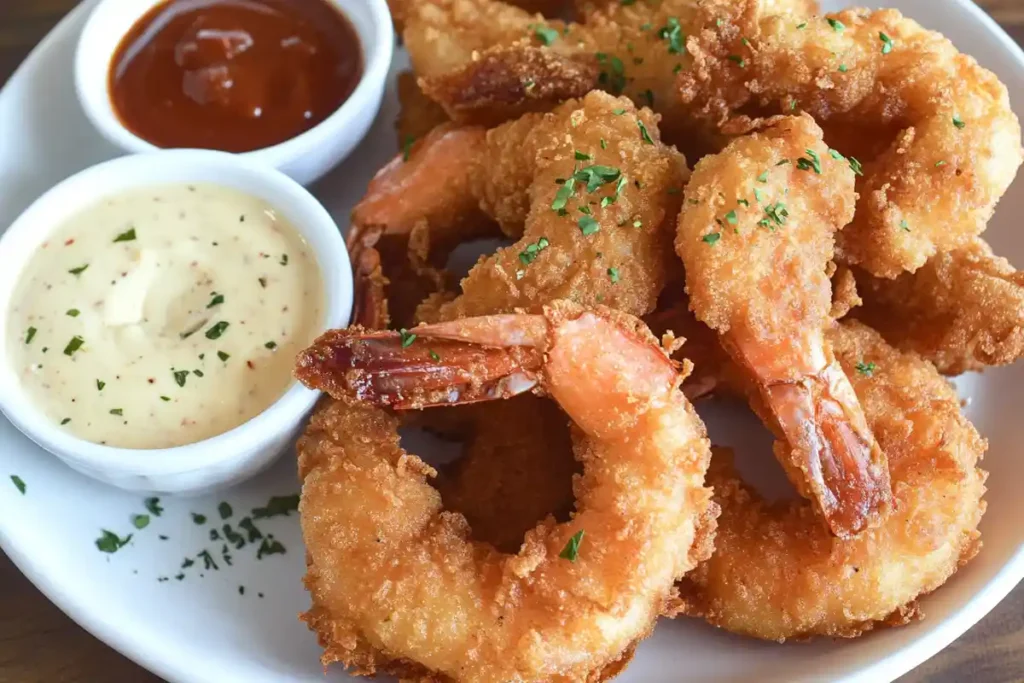
Calamari, shrimp, and scallops—seafood varieties are a natural fit for Long John Silver’s batter. Shrimp, in particular, fry up beautifully in the batter, creating a crispy coating while keeping the shrimp juicy and tender.
When preparing shrimp, make sure they are peeled and deveined. Coat them evenly in the batter and fry them in hot oil until they turn a rich golden brown.
Calamari rings and scallops can also be dipped in the same batter, delivering a restaurant-quality appetizer right at home.
Vegetable Applications
Vegetables coated in Long John Silver’s batter are a revelation. The light, crispy texture transforms ordinary veggies into mouthwatering appetizers or side dishes.
Onion Rings
Who doesn’t love a crispy onion ring? When coated in this batter, onions transform into crunchy golden rings with a soft, sweet interior. The batter clings perfectly to the onion slices, creating an even coating that fries up beautifully.
To make onion rings, slice large onions into thick rings, dip them into the batter, and fry until they’re crispy and golden. Serve with a creamy dipping sauce, and you’ve got a classic crowd-pleaser.
Fried Zucchini and Mushrooms
Zucchini and mushrooms are two other vegetables that pair exceptionally well with this batter. Zucchini fries are light and crispy, with a slightly sweet flavor that complements the seasoned batter perfectly.
Mushrooms, on the other hand, provide a hearty bite with their earthy, umami flavor. The batter creates a crunchy shell around the soft mushroom interior, delivering a satisfying contrast in textures.
To prepare these veggies, ensure they are sliced uniformly, coat them generously in the batter, and fry them until golden brown.
Nutritional Considerations of Long John Silver’s Batter
While Long John Silver’s batter is celebrated for its crunchy texture and irresistible flavor, it’s no secret that deep-fried foods come with nutritional trade-offs. Whether you’re enjoying it at the restaurant or preparing a homemade version, understanding the caloric content and exploring healthier preparation methods can help you strike a balance between indulgence and nutrition.
In this section, we’ll break down the nutritional profile of this iconic batter and share some simple strategies for making it slightly healthier without compromising on taste.
Caloric Content and Macronutrient Breakdown
The caloric content of Long John Silver’s batter-dipped fish largely depends on the frying process and portion size. On average, a single battered fish fillet contains approximately 200–300 calories, with most of the calories coming from fats and carbohydrates.
- Fats: The frying process naturally introduces oil into the batter, contributing to the overall fat content.
- Carbohydrates: Flour and cornstarch form the bulk of the batter, providing a significant source of carbs.
- Protein: While the batter itself is low in protein, the fish or other protein source underneath adds nutritional value.
Moderation is key for those watching their caloric intake. Pairing battered fish with lighter sides like steamed vegetables or a fresh salad can create a more balanced meal.
Tips for Healthier Preparation Methods
Fried food doesn’t have to be a guilty pleasure—there are several ways to make Long John Silver’s batter a bit healthier without sacrificing its signature crunch.
- Air Frying: Air fryers have become a popular alternative to traditional deep frying. They use significantly less oil while still delivering a crispy texture. Coat your seafood or vegetables with the batter and cook them in an air fryer at around 375°F (190°C).
- Use Heart-Healthy Oils: Opt for oils with unsaturated fats like canola oil or avocado oil for a healthier frying option.
- Control Oil Temperature: Maintaining the optimal frying temperature (around 350°F–375°F) prevents excessive oil absorption.
- Drain Excess Oil: After frying, place the battered food on a wire rack instead of paper towels. It helps keep the batter crispy while allowing excess oil to drip off.
- Smaller Portions: Consider smaller portion sizes to reduce overall caloric intake.
When approached mindfully, Long John Silver’s batter can still be a part of a balanced diet. By tweaking preparation techniques and being conscious of portion sizes, you can enjoy the crispiness and flavor guilt-free.
Frequently Asked Questions about Long John Silver’s Batter
Can I use this batter for baking instead of frying?
While Long John Silver’s batter is specifically designed for deep frying, it can technically be used for baking—but with mixed results. Frying gives the batter its signature crispy, golden-brown texture, which baking struggles to replicate.
In an oven, the batter won’t crisp up as much because it lacks the rapid moisture evaporation caused by hot oil. However, if you’re set on baking, try placing the battered fish or vegetables on a well-oiled baking sheet and bake at a high temperature (around 425°F / 220°C) to maximize crispiness.
How can I store leftover batter?
If you’ve prepared too much batter, it’s best to store it properly to maintain its quality and usability. Freshly mixed batter can be stored in an airtight container in the refrigerator for up to 24 hours.
However, batters made with club soda or other carbonated liquids may lose their fizz and light texture over time. To combat this, give the batter a gentle whisk before using it again.
What type of fish is best for this batter?
Cod is an ideal choice for Long John Silver’s batter because it is celebrated for its delicate flavor and firm, flaky texture. Its sturdy structure holds up well during frying, allowing the batter to cling evenly and create that signature golden crunch without falling apart.
Haddock: Slightly sweeter than cod, haddock fries up beautifully in the batter.
Pollock: Often used in commercial fish fries, pollock is affordable and holds up well during frying.

